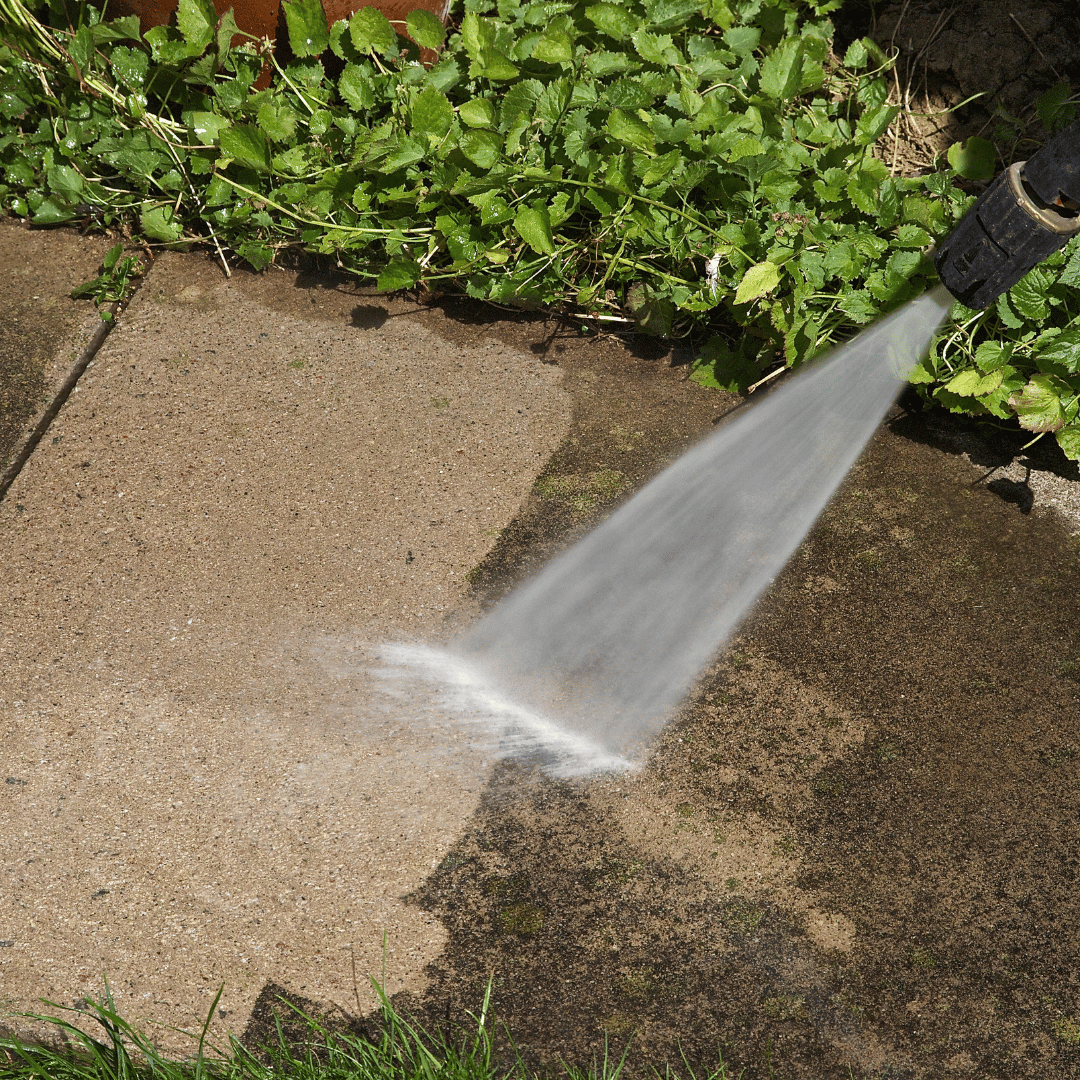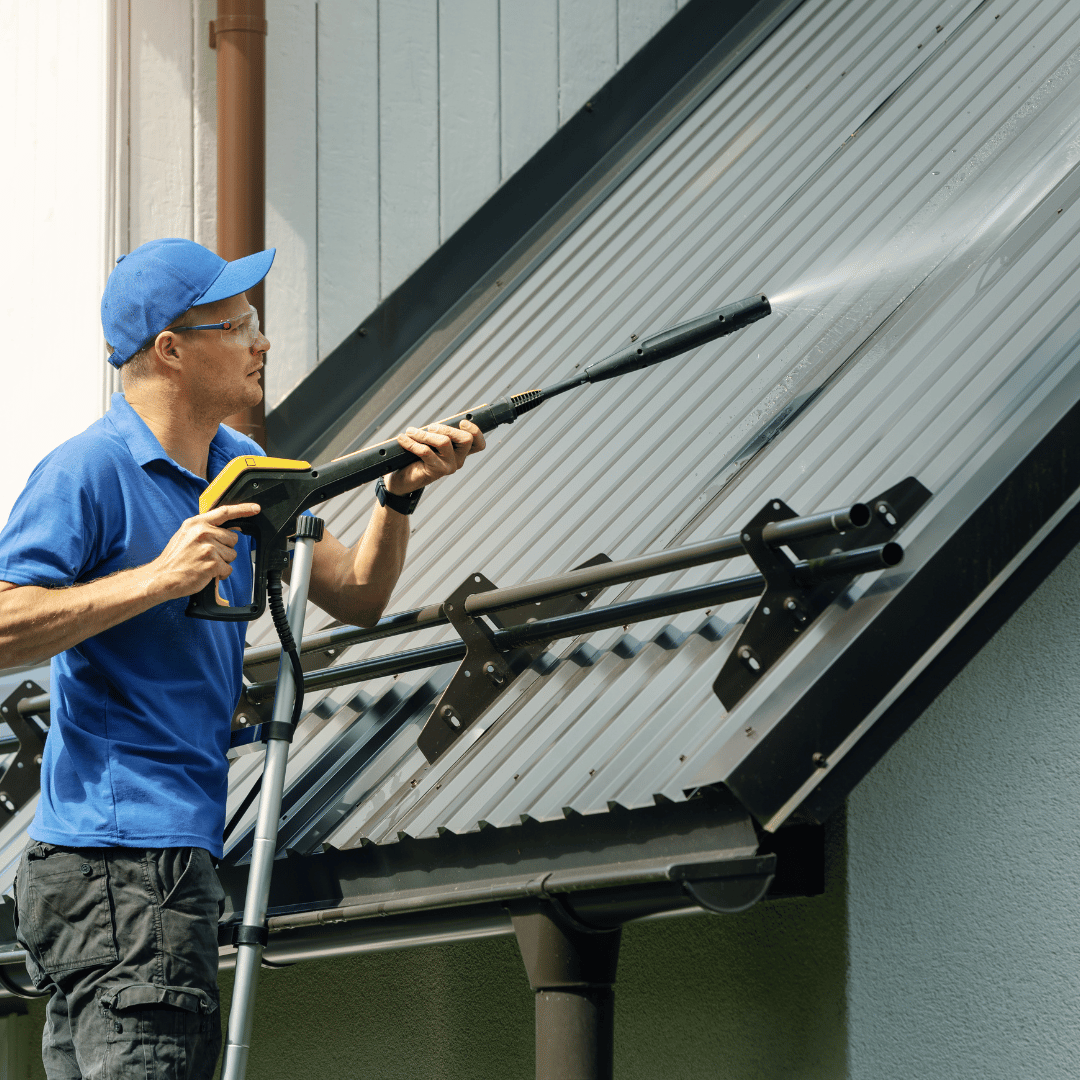
The Ultimate Guide to Patio Cleaning: Tips, Tricks, and Techniques
A well-maintained patio can significantly enhance the beauty and functionality of your outdoor space. Whether you use it for relaxing, entertaining, or dining, a clean patio creates a welcoming atmosphere and extends the lifespan of the surface. Regular patio cleaning is more than just a cosmetic touch-up; it plays a crucial role in overall Preventative Home Maintenance.
Maintaining your patio as part of your Exterior Home Maintenance routine not only improves its appearance but also helps prevent long-term damage. Dirt, grime, algae, and stains can deteriorate the surface over time, leading to costly repairs if left untreated. By incorporating patio cleaning into your home care schedule, you can avoid these issues and keep your outdoor area looking its best.
In this comprehensive guide, we will explore the best methods for patio cleaning, discuss whether pressure washing is suitable for your patio, and provide tips for cleaning without a pressure washer. Understanding these techniques will help you maintain a beautiful and functional patio, contributing to the overall upkeep of your home.
What is the Best Way to Clean a Patio?
Cleaning your patio effectively depends on various factors, including the type of surface and the level of dirt and stains. Here’s a breakdown of the best methods to ensure a thorough and efficient cleaning:
Determine the Patio Surface
Different patio materials require different cleaning approaches. Here’s a quick guide:
- Concrete Patios: These are durable and can withstand various cleaning methods, including pressure washing. For routine cleaning, a mixture of water and mild detergent works well. For tougher stains, use specialized concrete cleaners.
- Brick Patios: Brick surfaces are porous and can trap dirt and moss. Use a pH-neutral cleaner to avoid damaging the bricks. Avoid harsh chemicals that could affect the brick’s appearance.
- Stone Patios: Natural stone requires a gentle approach. Use a mild cleaner specifically designed for stone surfaces to prevent damage. Scrubbing with a soft brush helps lift dirt without scratching the stone.
Prepare the Patio
- Remove Debris: Begin by sweeping away loose dirt, leaves, and other debris. A broom or leaf blower can make this task easier.
- Pre-Treat Stains: For stubborn stains like oil or rust, apply a pre-treatment solution. Let it sit for the recommended time to break down the stains before cleaning.
Cleaning Methods
- Manual Scrubbing: For a thorough clean, use a stiff brush and a suitable cleaning solution. Scrub the patio in sections to ensure all areas are covered. This method is effective for removing dirt and algae from various surfaces.
- Using a Hose: For less intense cleaning, spray the patio with a garden hose to remove surface dirt. Combine this with manual scrubbing for better results.
- Pressure Washing: Pressure washing is highly effective for cleaning large areas and removing deeply embedded grime. Set the pressure to a suitable level to avoid damaging the surface. Use a pressure washer with a wide spray nozzle to cover the patio evenly.
Post-Cleaning Care
- Rinse Thoroughly: After cleaning, rinse the patio thoroughly with water to remove any remaining cleaning solution or debris.
- Allow to Dry: Let the patio dry completely before using it. This helps prevent mold and mildew growth, which can occur in damp conditions.
Incorporating these cleaning methods into your Exterior Home Maintenance routine helps maintain the appearance and longevity of your patio. Regular cleaning prevents the buildup of dirt and stains, ensuring your outdoor space remains inviting and functional.
What is the Best Thing to Clean a Concrete Patio With?
Concrete patios are durable and versatile, but they require specific cleaning solutions to maintain their appearance and longevity. Here’s a guide to the best products and methods for cleaning a concrete patio:
General Cleaning Solutions
- Mild Detergent and Water: For routine cleaning, a mixture of mild dish soap or detergent and water is often sufficient. This solution is gentle on the concrete and effective at removing general dirt and grime.
How to Use: Mix a small amount of detergent with water in a bucket. Apply the solution to the concrete patio using a mop or a soft brush. Scrub the surface, then rinse thoroughly with water. - Concrete Cleaners: Specialized concrete cleaners are formulated to break down stains and lift dirt more effectively than general-purpose cleaners. These are ideal for patios with stubborn stains or heavy buildup.
How to Use: Follow the manufacturer’s instructions for dilution and application. Typically, you apply the cleaner, let it sit for a few minutes to penetrate the stains, and then scrub the area before rinsing.
For Tough Stains
- Degreasers: If your concrete patio has oil or grease stains, a degreaser is highly effective. These products are designed to break down oily substances and make them easier to remove.
How to Use: Apply the degreaser directly to the stain and let it sit as per the instructions. Scrub the area with a brush, then rinse thoroughly with water. - Oxalic Acid: For rust stains, oxalic acid can help to dissolve the rust and remove the discoloration from the concrete surface. Use this product with caution and follow safety guidelines.
How to Use: Dilute the oxalic acid according to the instructions, apply it to the rust stains, and scrub with a brush. Rinse the area thoroughly after cleaning.
Pressure Washing
- When to Use: Pressure washing is an effective method for cleaning concrete patios, especially when dealing with large areas or deeply embedded grime. It can remove dirt, algae, and stubborn stains efficiently.
How to Use: Set the pressure washer to a suitable level (usually 2,000 to 3,000 psi) and use a wide spray nozzle to avoid damaging the concrete. Move the wand in a sweeping motion, covering the entire surface evenly. Be cautious with the pressure settings to prevent surface damage.
Natural Solutions
- Vinegar and Baking Soda: For a more natural approach, a mixture of vinegar and baking soda can be used. This method is effective for minor stains and general cleaning.
How to Use: Sprinkle baking soda over the patio surface, then spray with a mixture of vinegar and water. Let it fizz and sit for a few minutes, then scrub and rinse thoroughly.
Professional Products
- Commercial Concrete Cleaners: There are various commercial products available that are specifically designed for cleaning concrete. These often include heavy-duty degreasers and stain removers that are effective for tougher cleaning jobs.
How to Use: Follow the manufacturer’s guidelines for the best results. These products are generally straightforward and come with detailed instructions.
By using the appropriate cleaning solutions and methods, you can keep your concrete patio looking fresh and well-maintained. Incorporating Pressure Washing and specialized cleaners into your Exterior Home Maintenance routine helps ensure that your patio remains in excellent condition, contributing to the overall beauty and functionality of your outdoor space.
Should You Pressure Wash a Patio?
Pressure washing is a popular method for cleaning patios, offering a thorough and efficient way to remove dirt, grime, and stains. However, it’s essential to weigh the benefits and potential drawbacks to determine if it’s the right approach for your patio. Here’s a closer look at whether you should pressure wash your patio:
Benefits of Pressure Washing
- Efficient Cleaning: Pressure washing can quickly and effectively remove accumulated dirt, debris, moss, and algae from patio surfaces. The high-pressure water stream reaches into crevices and lifts grime that traditional cleaning methods might miss.
- Restores Appearance: By removing stubborn stains and surface discoloration, pressure washing can restore the original look of your patio. This method is particularly effective for concrete and brick patios that have become discolored over time.
- Time-Saving: Pressure washing covers large areas in a relatively short time, making it a time-efficient option for extensive patio cleaning.
Potential Drawbacks of Pressure Washing
- Surface Damage: High-pressure water streams can potentially damage delicate surfaces, such as certain types of stone or aging brick. The force of the water might erode the surface or cause loose material to come off.
- Water Usage: Pressure washing uses a significant amount of water. If you are environmentally conscious or dealing with water restrictions, this might be a consideration.
- Preparation Required: Before pressure washing, you need to prepare the area by removing furniture, covering plants, and ensuring that delicate surfaces are protected.
When to Use Pressure Washing
- Concrete Patios: Pressure washing is highly effective for cleaning concrete patios, especially when dealing with deep-seated grime or extensive dirt buildup. The robust surface of concrete can handle the pressure without significant risk of damage.
- Brick Patios: While pressure washing can be used on brick patios, it’s crucial to adjust the pressure settings to avoid damaging the mortar between bricks. Using a lower pressure setting and a fan nozzle can help mitigate risks.
- Stone Patios: For natural stone patios, pressure washing can be effective but must be done with caution. Opt for a lower pressure setting and a wide spray nozzle to protect the stone surface from damage.
Alternatives to Pressure Washing
If you’re concerned about the potential drawbacks of pressure washing, consider alternative methods for cleaning your patio:
- Manual Scrubbing: Use a stiff brush and suitable cleaning solutions to scrub the patio surface. This method is gentler on the material and effective for removing surface dirt and stains.
- Hose and Brush: A garden hose combined with a brush can provide a less intense cleaning option. This method is effective for routine cleaning and light stains.
Pressure washing can be a powerful tool for patio cleaning, especially when dealing with large areas and stubborn stains. However, it’s essential to use the correct pressure settings and techniques to avoid potential damage to your patio surface. Assess the condition of your patio and consider professional advice if you’re unsure whether pressure washing is appropriate.
Including Pressure Washing as part of your Exterior Home Maintenance routine can significantly enhance the cleanliness and appearance of your patio, contributing to the overall upkeep and beauty of your outdoor space.
How Do I Clean My Patio Without a Pressure Washer?
If you prefer not to use a pressure washer or if it’s not suitable for your patio surface, there are effective methods to clean your patio without it. Here’s a step-by-step guide to help you achieve a thorough clean using alternative techniques:
Gather Your Supplies
- Broom or Leaf Blower: For removing loose dirt and debris.
- Stiff-Bristle Brush: For scrubbing the patio surface.
- Buckets: For mixing cleaning solutions.
- Garden Hose: For rinsing the patio.
- Cleaning Solutions: Mild detergent, vinegar, baking soda, or commercial cleaners.
Remove Debris
- Sweep or Blow: Start by sweeping the patio with a broom or using a leaf blower to remove loose dirt, leaves, and other debris. This step prepares the surface for a more effective cleaning.
Pre-Treat Stains
- Apply Stain Remover: For stains such as oil or rust, apply a suitable pre-treatment solution. Follow the instructions on the product for the best results, and allow it to sit for the recommended time to break down the stains.
Clean the Patio
- Mix Cleaning Solution: Create a cleaning solution by mixing mild detergent with water in a bucket. For concrete patios, you can use a mixture of vinegar and water or a specialized concrete cleaner.
- Scrub the Surface: Use a stiff-bristle brush to scrub the patio surface. Apply the cleaning solution generously and work in sections to ensure all areas are covered. Scrub in a circular motion to lift dirt and grime effectively.
- Focus on Problem Areas: Pay extra attention to areas with stubborn stains or heavy grime. You may need to scrub these spots more vigorously or use a specialized cleaner.
Rinse Thoroughly
- Use a Garden Hose: After scrubbing, rinse the patio thoroughly with a garden hose. Ensure that all cleaning solution residue is washed away to prevent any film or residue from remaining on the surface.
- Remove Excess Water: If water pools in certain areas, use a squeegee or mop to remove excess water. This helps to speed up the drying process and prevents potential mold growth.
Dry the Patio
- Allow to Air Dry: Let the patio dry completely before using it. Good ventilation and sunlight will aid in the drying process. Ensure that the surface is thoroughly dry to avoid mold or mildew formation.
Regular Maintenance
- Routine Cleaning: Incorporate regular cleaning into your Exterior Home Maintenance routine to keep your patio looking its best. Sweeping or blowing off debris and occasionally scrubbing the surface can prevent the buildup of grime and stains.
- Inspect for Damage: Regularly check for any signs of damage or wear on your patio. Address any issues promptly to maintain the integrity of the surface.
Benefits of Non-Pressure Washing Methods
- Gentler on Surfaces: Manual cleaning methods are less likely to cause damage to delicate surfaces compared to pressure washing.
- Water Conservation: Using less water compared to pressure washing can be beneficial if you are mindful of water usage.
- Cost-Effective: Avoiding the need for a pressure washer or hiring a professional can save you money.
By following these steps, you can effectively clean your patio without the need for a pressure washer. Regular maintenance and cleaning will help keep your patio in excellent condition, enhancing its appearance and longevity as part of your comprehensive Preventative Home Maintenance strategy.
Maintaining a clean and well-kept patio is an essential part of your Exterior Home Maintenance routine. Whether you opt for pressure washing or alternative cleaning methods, the goal remains the same: to enhance the appearance and longevity of your outdoor space.
From choosing the right cleaning solutions to deciding on the best approach for your specific patio surface, understanding the various methods and their benefits can help you achieve a spotless and inviting patio. Regular cleaning not only improves the look of your patio but also helps prevent damage caused by dirt, grime, and stains, ultimately contributing to your home’s overall maintenance.
If you decide to use a pressure washer, ensure that you use the correct settings and techniques to avoid potential damage. Alternatively, manual scrubbing and non-pressure washing methods can be highly effective and gentle on your patio surfaces.
Incorporating patio cleaning into your Preventative Home Maintenance routine will help you avoid costly repairs and maintain a beautiful outdoor space for years to come. With the right care, your patio will remain a welcoming area for relaxation and entertainment, reflecting the overall upkeep and care you put into your home.
For comprehensive home maintenance services, including patio cleaning and other essential tasks, HomeSmiles is here to help you manage all those “honey-do” items on your list. Our extensive 18-point maintenance service ensures that every aspect of your home is taken care of, so you can enjoy a well-maintained and beautiful living environment.
- Protecting Your Property: Why the Right Cleaning Method Makes All the Difference
- The #1 Thing That’s Dulling Your Curb Appeal (And How to Fix It)
- How Maintenance Bundles Provide Peace of Mind for Busy Small Business Owners and Facility Managers
- Essential vs. Complete Home Packages: Choosing the Right Preventive Care for Your Property
- How a Simplified Service Model Benefits Both Homeowners and Franchisees Alike


